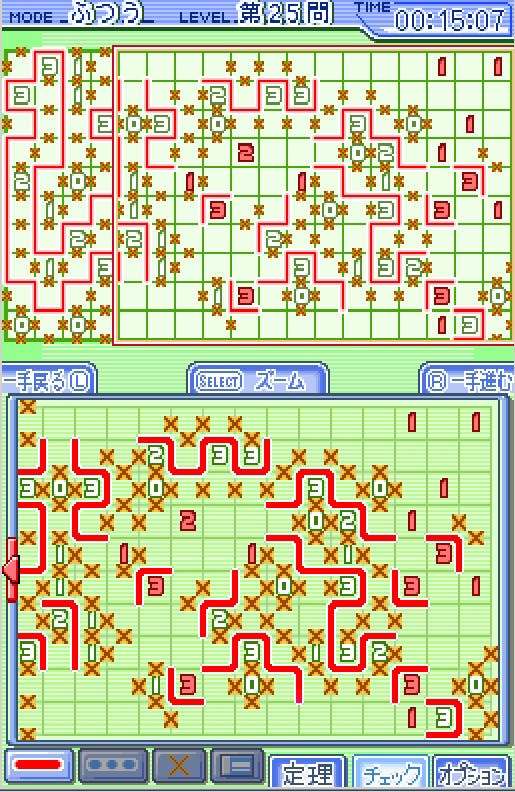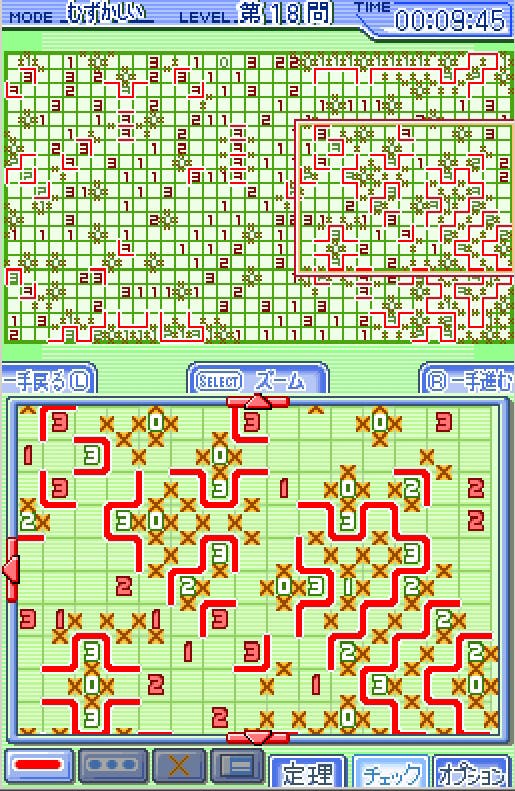Puzzle Series Vol. 5: Slitherlink
Loopy for the loops, we are.
Farflung lurch technique
These little boxes of joy never disappoint. They never fail like a high difficulty Suckodu might, forcing you to guess. Instead there's always a logical next move. You either didn't spot it yet, or you didn't learn a technique advanced enough to spot. Hundreds of puzzles in, I'm still learning new tricks. They're ludicrously elaborate now, based on groupings of 3s and 1s on an edge, or 2s in corners of 3s and 1s, where I spy the correct conditions and leap upon it, hoping it will open up another section of lines to fill in. Seeing one you've missed is like discovering the box of expensive chocolates you were given in fact has another layer underneath. This is how puzzles should always be - so perfectly constructed and utterly rewarding to complete. Even completing the Telegraph cryptic crossword (a feat I've only ever managed in a team with my mum) doesn't match the satisfaction of seeing the loop link up and the "COMPLETION!!" appear on the screen.
More peculiar is the anthropomorphism I've developed when I view the numbers. Numbropomorphism as someone suggested (I rudely forget who, so fail to award credit). 3s are greedy, boisterous, and definitely male. They bully the other numbers, barging their way through queues and spilling pints. 2s are the very opposite, prim and polite, sensible, and certainly female. They are business-like, efficient and tidy, but remarkably clever. They tolerate the 3s, but find the 1s tiresome. And indeed the 1s are tiresome. Needy cowards, they feebly sit in the way, refusing to help.
So yes, I've gone insane. But what do you expect after spending at least an hour a day with this game for the past third of a year? It kept me sane over Christmas, and more importantly, keeps me sane on the bus. It fills awkward gaps in a busy day, and adds the required extra entertainment when watching a mediocre television programme. And yes, it's fighting with Private Eye for my Special Morning Sit-down entertainment.

If you're not convinced at this puzzling perfection, there are all sorts of flash games scattered around the internet, and various newspapers occasionally print them next to the sillier puzzles. But, and here's why this Hudson release is so damned perfect, none compare to the ease with which it can be played on the DS. Unlike Sudoku, Slitherlink sits far more comfortably with a stylus and touch-screen.
For one thing, the different colours make it far easier to spot patterns, with red lines, yellow Xs and white numbers. To recreate this in the newspaper would require a box of crayons and more patience than Robbie Williams' therapist. And for another, you can make mistakes, with the game remembering every move you've played and letting you take them back one by one. And the first time you play it, it will take you through the most remarkably comprehensive tutorial, all pictorial, that will make sure you have the basics from the very beginning.

The design gets even better. The red lines you draw, when connected up, have a rainbow pattern gently running around its course. It's a tiny detail, but it's a fantastic visual demonstration of the intricate looping structure you're building. Then the top screen shows a full display of the grid, very useful when the puzzle is too big for the touch-screen. Every shortcut you could want has been thought of - double-tapping takes it from a line to an X, and another clears it away, rather than having to switch between each as you go along. It's neat, sleek, and astonishingly clear. If every puzzle game could only be so wonderfully built.
Japanese to Eurogamer Dictionary
The catch? It's somewhat in Japanese. But this doesn't present a problem once the menus are fathomed. For your merry convenience, here's a quick guide. To start tap the top-left box, then the top box on the right. Then the four options that appear are the four difficulty levels. Once in a game, The three buttons on the right at the foot of the touch-screen are as follows: Tips, switch unfinished numbers to red, and options. And in the options, all that matter are the top-right to start a puzzle over, and just below it to give up completely. (Oh, and you can turn the horrid music off here too.)
It's taken over my life, and it's currently taking over Tom's, as he pops up in IM windows to alert me to his latest speedy solving times. It's so perfectly implemented, never fiddly, always smooth. It does, it must be noted, start to struggle once you're at the very end of a 36x20, when managing all the data on screen, but that's the most minor of gripes. While the Hudson Puzzle series has contained some gems, especially the joyful Honeycomb Beat, none match Slitherlink's ease of use, intuitive controls, and blissful perfection in puzzle design.








